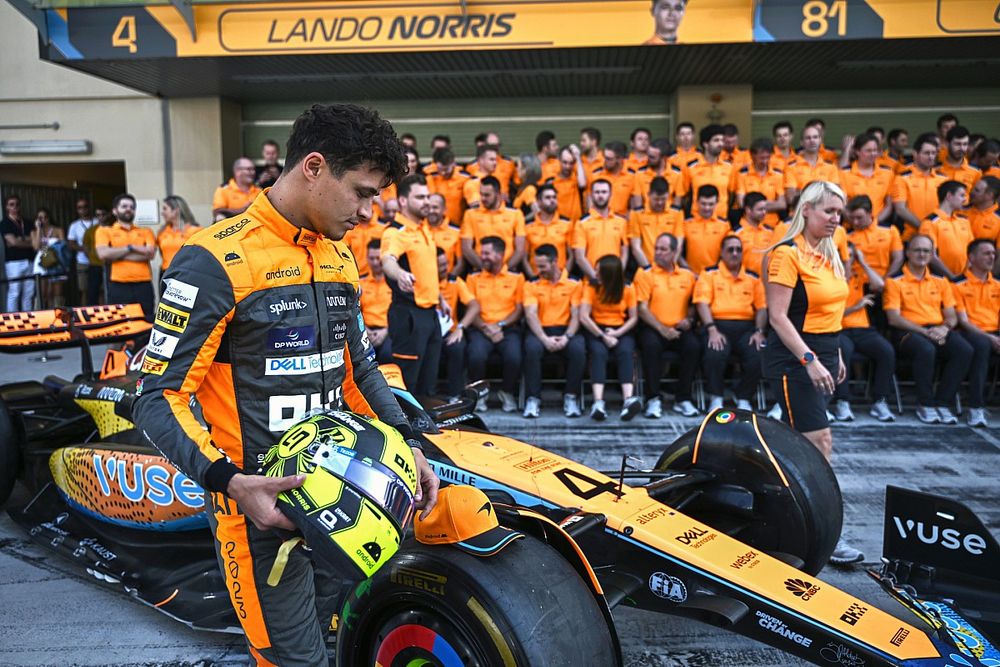When one thinks of classic Formula 1 venues, the Autódromo Hermanos Rodríguez in Mexico City undoubtedly springs to mind. With its energetic crowds, epic stadium section, high-altitude challenges and a history shaped by unforgettable moments, it is a Grand Prix that always promises drama. This year, Lando Norris gave fans a masterclass in modern racecraft, conquering the circuit’s tricky conditions and a fiercely competitive grid to claim an emphatic win that sent shockwaves through the F1 world.
From the first laps of the weekend, it was clear that McLaren’s package had found a sweet spot. Despite uncertainty due to the track’s thin air and the unique demands it puts on hybrid systems and cooling, Norris and his engineers managed to strike the perfect balance. As lights went out on Sunday, it was rapidly apparent that Norris was not simply in damage-limitation mode for his team; he had genuine, dominant pace.
Norris wasted no time making his intentions clear, executing a calculated launch and immediately setting blistering lap times that left rivals scrambling for a response. The high-altitude, combined with Mexico’s slippery surface, wreaked havoc on tire management strategies up and down the paddock. Yet, Norris’s skillful modulation of his pace, particularly through the technical S-sections, kept him ahead and maximizing every opportunity as the race unfolded.

Behind Norris, the battle for the podium was a true fiesta of strategy. Max Verstappen, ever the relentless hunter, found himself entangled in a dramatic scrap with Charles Leclerc and Lewis Hamilton, both eager to capitalize on any opportunity. Although Verstappen had shown formidable long-run pace earlier in the weekend, the Red Bull’s typically superior tire-saving performance seemed hampered by the lower air density, forcing the Dutchman into an aggressive two-stop strategy that meant constant on-track battling.
Leclerc and Hamilton, meanwhile, showcased contrasting approaches. Ferrari gambled on track position, hoping to nurse their aging mediums to the flag, while Mercedes pitted Hamilton late, unleashing him on fresher rubber for a barnstorming final stint. The relentless British driver carved his way back onto the podium, clocking the race’s fastest laps and mounting pressure on the scarlet cars ahead. In the end, his efforts earned a well-deserved second place.
Amid all this, the Mexican crowd had eyes fixed on their local hero, Sergio Perez. A first-lap incident scuppered Perez’s hopes of a fairytale home win, but the crowd’s unwavering support became one of the lasting images of the event – a testament to Formula 1’s power to unite and inspire, regardless of the result. Similarly, Daniel Ricciardo delivered a punchy drive for AlphaTauri, taking crucial points and reminding the paddock of his undiminished talent.
The Mexico City Grand Prix also underlined the tactical depth present in this year’s championship. Each team had to make difficult, race-defining calls: when to pit, which tires to gamble on, and how to maximize every stint under unique environmental stresses. For Norris and McLaren, everything clicked. Their commitment to aggressive yet precisely timed strategy was evident – particularly as Lando built a lead, managing the gaps and responding to undercut threats with unwavering composure.
As the chequered flag fell, Norris’s triumph was more than a personal milestone. It signaled a changing of the guard in the fight at the sharp end of the grid and rewarded years of hard work, not just from the young Briton but from the entire McLaren squad. With championship standings tightening and rivals raising their game, fans are set for a thrilling run-in to the season’s conclusion.
For Hungarian Formula 1 enthusiasts and beyond, Norris’s dominating drive in Mexico will be remembered as one of the highlights of a spectacular year. More than just a race win, it was a display of intelligence, resilience, and breathtaking speed – and proof that, in F1, anything is possible on any given Sunday.


















































































































































































































































































































































































































































































































